Your GitHub profile serves as more than just a code repository when pursuing analytics roles—it functions as your technical portfolio and professional showcase. A well-optimized GitHub profile can significantly boost your visibility and credibility with hiring managers who evaluate candidates based on their problem-solving abilities and project presentation skills. Analytics professionals who enhance their GitHub vanity metrics like stars, forks, and contributions create strategic advantages in their job search.
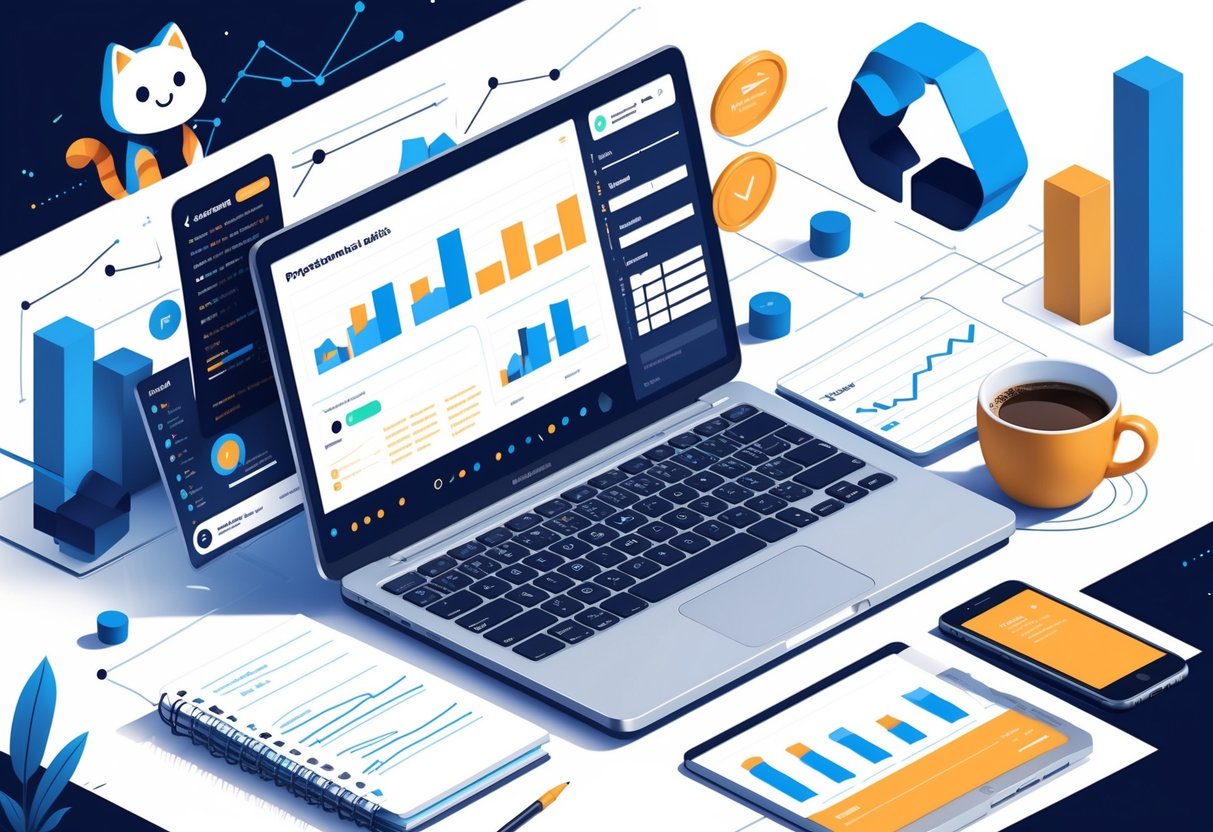
Many analytics candidates struggle to differentiate themselves in a competitive market. Their profiles often contain scattered repositories with poor documentation and unclear project structures. This leaves hiring managers unable to assess their true capabilities and analytical thinking processes.
This guide explores how to transform a basic GitHub presence into a compelling professional asset. Readers will discover strategies for creating impactful analytics projects, writing effective documentation, and engaging with the developer community. The article covers essential profile elements, repository optimization techniques, and community engagement tactics that help analytics professionals stand out to potential employers.
Key Takeaways
- An optimized GitHub profile functions as a technical resume that demonstrates problem-solving skills and professional presentation abilities
- Well-structured analytics projects with clear documentation and logical organization showcase analytical thinking to potential employers
- Active community engagement and strategic repository management increase profile visibility and professional credibility
Why an Optimized GitHub Profile Matters for Analytics Careers
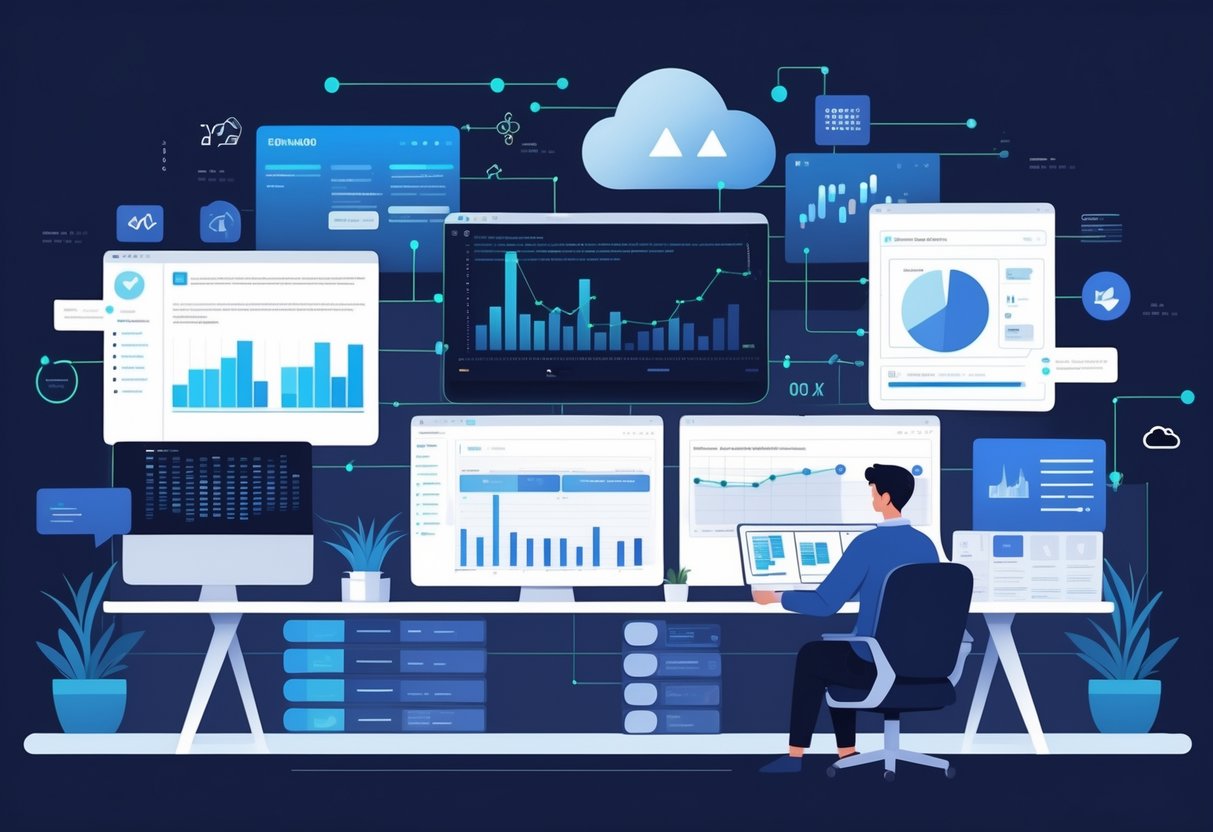
A well-crafted GitHub profile serves as a technical resume that demonstrates analytical skills in action. Recruiters frequently search GitHub for talented individuals, making profile optimization crucial for career advancement in analytics.
The Role of GitHub in the Analytics Hiring Process
Modern analytics hiring has shifted beyond traditional resumes. Many hiring managers consider GitHub activity when evaluating candidates, making it a critical component of the selection process.
Hiring managers examine GitHub profiles to assess technical competence. They look for consistent contributions, quality code structure, and documentation standards. The green contribution squares tell a story of regular engagement with analytical projects.
Key areas hiring managers evaluate:
- Code quality and organization
- Documentation practices
- Project complexity and scope
- Collaboration through pull requests
- Problem-solving approaches
Analytics recruiters specifically search for candidates who demonstrate data manipulation skills. They want to see real examples of data cleaning, visualization, and statistical analysis rather than just listed skills on a resume.
Showcasing Analytical Thinking and Problem Solving
A GitHub profile reveals how analysts approach complex problems. Each repository should demonstrate unique skills or approaches to data analysis, showing depth of thinking beyond surface-level coding.
Analytics professionals can display their methodology through well-structured projects. Clear README files explain the business problem, data sources, and analytical approach. This demonstrates the ability to frame problems and communicate solutions.
Effective ways to showcase analytical thinking:
- Document decision-making processes
- Explain why specific tools were chosen
- Show data exploration steps
- Include assumption testing
- Display model validation approaches
Project organization reflects professional analytical capabilities. Clean separation between raw data, processed data, and results shows systematic thinking. Logical notebook progression demonstrates the ability to break complex analyses into manageable steps.
Building a Professional GitHub Presence
A GitHub profile serves as more than just a code hosting platform – it’s a technical resume in action. Professional presence requires attention to profile completeness, project quality, and consistent engagement.
Analytics professionals should maintain active GitHub presence through regular commits and project updates. Sporadic activity suggests lack of commitment to continuous learning and skill development.
Essential elements of professional GitHub presence:
- Complete profile information with professional photo and bio
- Pinned repositories highlighting best analytical work
- Detailed project documentation explaining methodology
- Clean code structure with proper commenting
- Regular contribution activity showing ongoing engagement
Quality matters more than quantity in repository management. A few well-documented, thoughtfully structured projects demonstrate more value than dozens of incomplete analyses. Each project should tell a complete story from problem identification to solution implementation.
Essential Elements of an Effective Analytics GitHub Profile
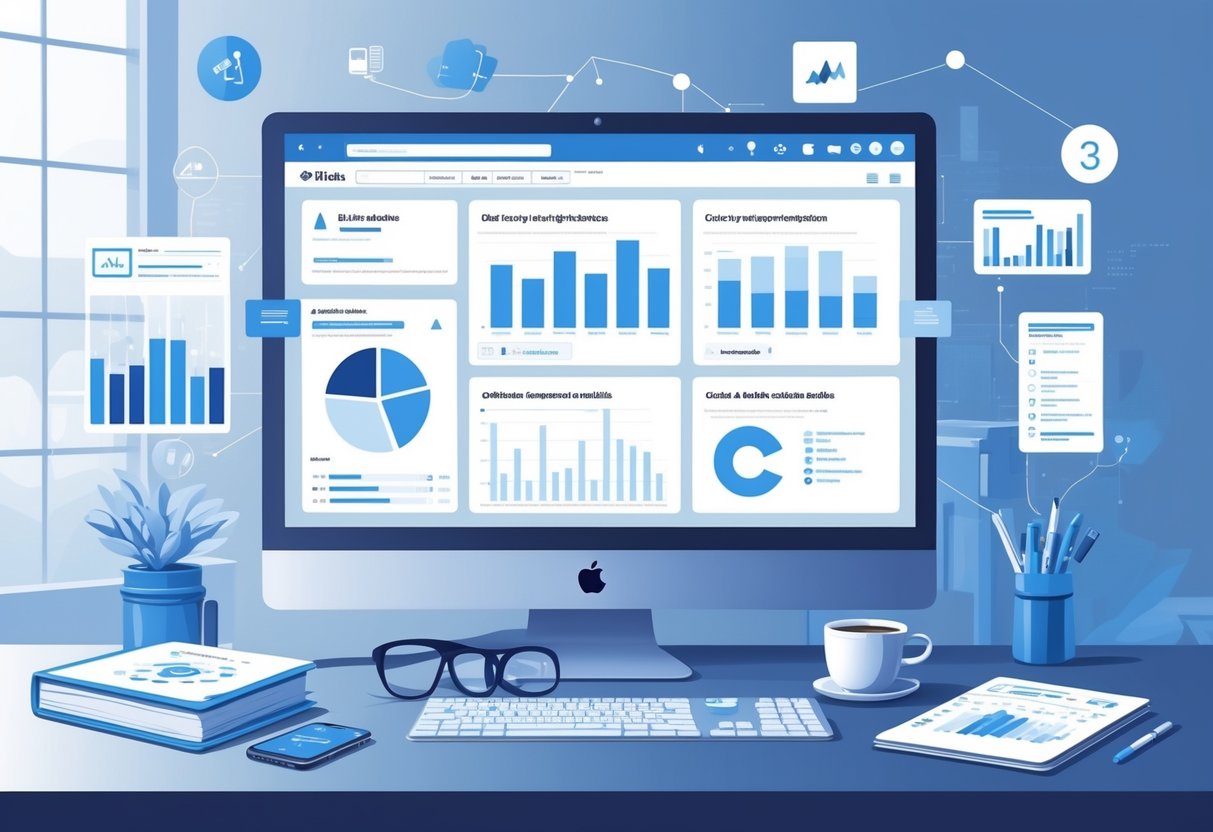
A strong analytics GitHub profile requires three core components: a clear professional bio that highlights data expertise, strategically pinned projects that demonstrate technical capabilities, and visible skills that align with analytics roles.
Crafting a Compelling Bio and Profile Overview
The profile README serves as the first impression for potential employers and collaborators. Analytics professionals should create a polished profile README by establishing a repository with their exact username.
The bio section should immediately communicate the person’s analytics focus. A data scientist might write: “Machine Learning Engineer specializing in predictive modeling and statistical analysis.”
Key elements include:
- Current role and specialization
- Years of experience in analytics
- Primary programming languages (Python, R, SQL)
- Industry expertise (healthcare, finance, retail)
The overview should feature dynamic GitHub stats cards that showcase contribution patterns. These visual elements demonstrate consistent coding activity and project involvement.
Contact information and professional links belong in this section. LinkedIn profiles, personal websites, and portfolio links help visitors connect across platforms.
Selecting and Pinning Your Strongest Projects
GitHub allows users to pin up to six repositories directly to their profile page. Analytics professionals should choose projects that demonstrate real-world problem-solving abilities.
Ideal analytics projects include:
- Data visualization dashboards
- Machine learning models with clear business applications
- Statistical analysis with actionable insights
- ETL pipelines or data processing workflows
Each pinned project needs comprehensive documentation. The README file should explain the business problem, methodology, and results achieved.
Projects should show progression in complexity and skill level. A junior analyst might pin a basic exploratory data analysis, while senior professionals showcase end-to-end machine learning systems.
Live demos or interactive visualizations make projects more engaging. Deployed models on platforms like Streamlit or Heroku demonstrate practical application skills.
Highlighting Relevant Analytics Skills and Technologies
The skills section should reflect current industry demands and personal expertise areas. Analytics professionals work with diverse technology stacks that need clear representation.
Core analytics technologies to highlight:
| Category | Technologies |
|---|---|
| Programming | Python, R, SQL, Scala |
| Visualization | Tableau, Power BI, Matplotlib, Plotly |
| Machine Learning | Scikit-learn, TensorFlow, PyTorch |
| Databases | PostgreSQL, MongoDB, Snowflake |
| Cloud Platforms | AWS, Azure, Google Cloud |
GitHub topics and repository tags help organize projects by skill area. Tags like “machine-learning,” “data-visualization,” and “statistical-analysis” improve discoverability.
Contribution graphs show coding consistency over time. Regular commits indicate ongoing skill development and project maintenance.
The GitHub presence should align with the professional brand across other platforms. Skills listed on the GitHub profile should match those on LinkedIn and resume documents.
Creating Standout Analytics Projects and Repositories

Analytics professionals need repositories that demonstrate both technical skills and business acumen. Successful projects combine compelling data problems with clear documentation and actionable insights that employers can quickly evaluate.
Choosing Impactful Data Analysis Topics
Analytics repositories gain attention when they solve real-world problems rather than using generic datasets. Professionals should focus on projects that demonstrate domain expertise and business understanding.
High-Impact Project Categories:
- Business Operations: Customer churn prediction, pricing optimization, inventory forecasting
- Market Analysis: Competitor analysis, demand forecasting, trend identification
- Process Improvement: A/B testing frameworks, operational efficiency metrics, quality control systems
Healthcare, finance, and e-commerce domains offer particularly strong project opportunities. These industries generate complex data that showcases advanced analytical thinking.
Professionals should avoid overused datasets like Titanic survival or iris classification. Instead, they can collect data through APIs, web scraping, or public government sources. This approach demonstrates data acquisition skills alongside analysis capabilities.
Projects should address specific business questions with measurable outcomes. For example, “reducing customer acquisition costs by 15%” shows more impact than “analyzing customer behavior patterns.”
Organizing Project Structure for Clarity
Well-organized repositories allow potential employers to evaluate GitHub projects quickly and effectively. Clear structure demonstrates professional development practices that analytics teams value.
Essential Repository Components:
| Component | Purpose | Location |
|---|---|---|
| README.md | Project overview and setup | Root directory |
| data/ | Raw and processed datasets | Separate folder |
| notebooks/ | Jupyter analysis files | Organized by workflow |
| src/ | Python/R scripts | Modular functions |
| visualizations/ | Charts and dashboard exports | Easy access folder |
The README should explain the business problem, methodology, and key findings within the first few paragraphs. Technical recruiters spend only 30 seconds on initial repository scans.
Code should follow consistent naming conventions and include docstrings for all functions. This shows attention to detail that analytics managers expect from their teams.
Data files require clear documentation about sources, collection methods, and any preprocessing steps. This transparency builds trust in the analysis results.
Incorporating Visualizations and Business Insights
Analytics repositories must translate technical findings into business-relevant insights. Strong visualizations and clear recommendations separate exceptional candidates from average ones.
Effective Visualization Strategies:
- Dashboard Screenshots: Include images of interactive dashboards built in Tableau, Power BI, or Python
- Key Metrics Highlights: Feature the most important findings prominently in the README
- Before/After Comparisons: Show measurable improvements from analytical recommendations
Business insights should connect directly to organizational goals. Revenue impact, cost savings, and efficiency improvements resonate with hiring managers across industries.
Professionals can embed charts directly in their GitHub README files using tools like matplotlib or plotly. This allows viewers to see results without downloading files or running code.
Each visualization needs a clear title and explanation of what it reveals about the business problem. Raw charts without context fail to demonstrate analytical communication skills.
The repository should conclude with specific, actionable recommendations based on the analysis. These suggestions show strategic thinking beyond technical execution.
Mastering the README for Analytics Repositories
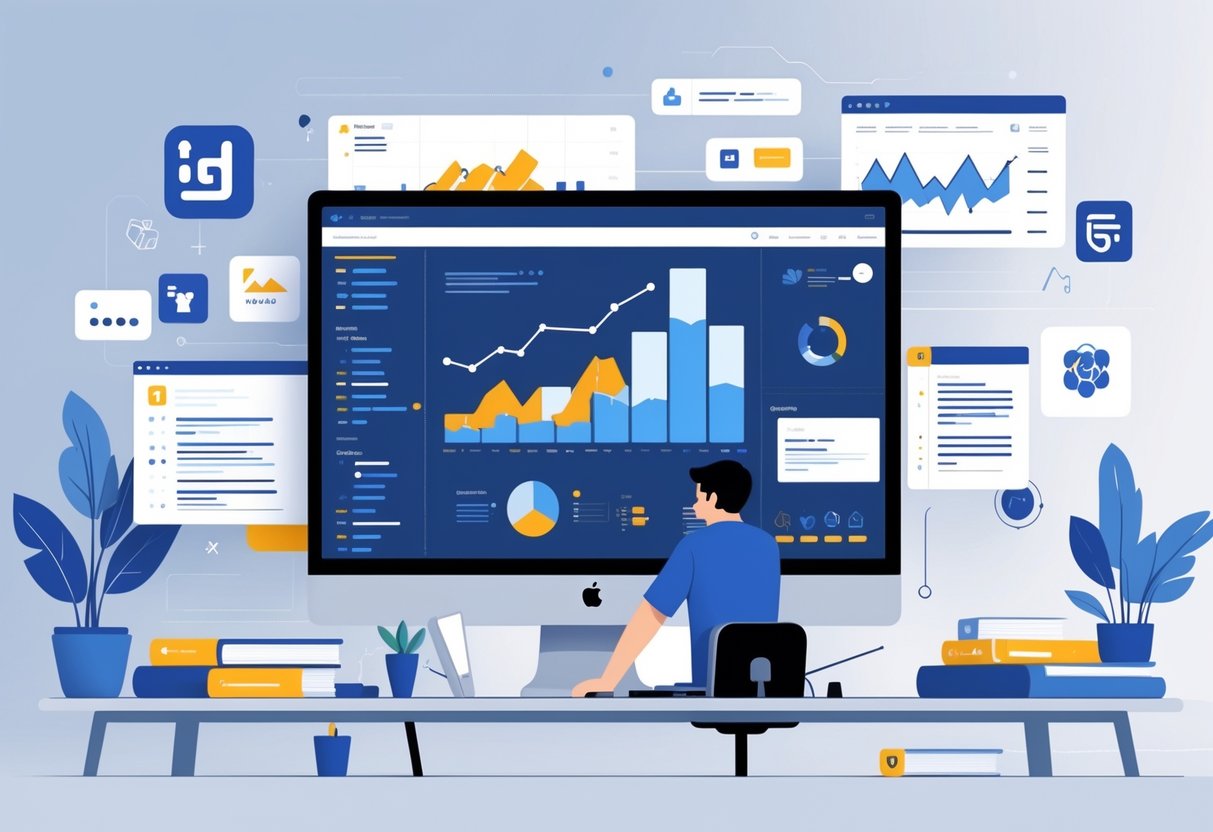
A well-crafted README transforms an analytics repository from a collection of files into a compelling narrative that showcases technical expertise. Data professionals must balance technical documentation with clear storytelling to demonstrate their analytical thinking and make their work accessible to both technical and non-technical audiences.
Telling the Story Behind Your Analysis
Analytics professionals should frame their README as a compelling narrative that explains the business problem and analytical approach. The story begins with context about why the analysis matters and what questions it seeks to answer.
Start with the business context. Explain the real-world problem or opportunity that drove the analysis. Include relevant background information that helps readers understand the stakes and importance of the work.
Define clear objectives. State specific questions the analysis addresses and hypotheses being tested. This demonstrates structured thinking and purposeful analysis rather than exploratory data mining.
Highlight key findings upfront. Include a brief executive summary of the most important insights discovered. Use bullet points or numbered lists to make findings scannable for busy readers.
Analytics repositories benefit from visual elements that support the narrative. Include charts, graphs, or screenshots that illustrate key findings without requiring readers to run the code themselves.
Documenting Methodologies and Decision-Making
Technical documentation in analytics README files must explain not just what was done, but why specific approaches were chosen. This transparency demonstrates analytical rigor and helps others understand the reasoning behind methodological choices.
Explain data sources and collection methods. Describe where data came from, how it was gathered, and any limitations or biases present in the dataset. Include details about data quality issues encountered and how they were addressed.
Document analytical techniques used. List statistical methods, machine learning algorithms, or analytical frameworks applied. Explain why these particular approaches were selected over alternatives.
Address assumptions and limitations. Be transparent about what the analysis can and cannot conclude. Discuss potential sources of error or bias that might affect results.
Create a methodology section that includes:
| Component | Description |
|---|---|
| Data preprocessing | Steps taken to clean and prepare data |
| Analysis approach | Statistical or analytical methods used |
| Validation methods | How results were tested or verified |
| Tools and libraries | Software packages and versions used |
Enhancing Reproducibility with Clear Instructions
Reproducible analytics requires detailed setup instructions that allow others to run the analysis and verify results. The README should serve as a complete guide for recreation without additional documentation.
Provide comprehensive setup instructions. Include environment requirements, package versions, and installation steps. Use virtual environments or containers when possible to ensure consistency across different systems.
Structure file organization clearly. Explain the purpose of each directory and file in the repository. Create a clear hierarchy that logical progression from raw data to final results.
Include execution instructions. Provide step-by-step commands or scripts that reproduce the entire analysis pipeline. Number the steps and explain what each accomplishes.
Essential reproducibility elements include:
- Requirements file with exact package versions
- Data dictionary explaining variables and definitions
- Execution order for running scripts or notebooks
- Expected outputs so users can verify successful reproduction
Link to relevant documentation about repository best practices to ensure professional standards are met.
Engaging with the GitHub Community for Greater Visibility
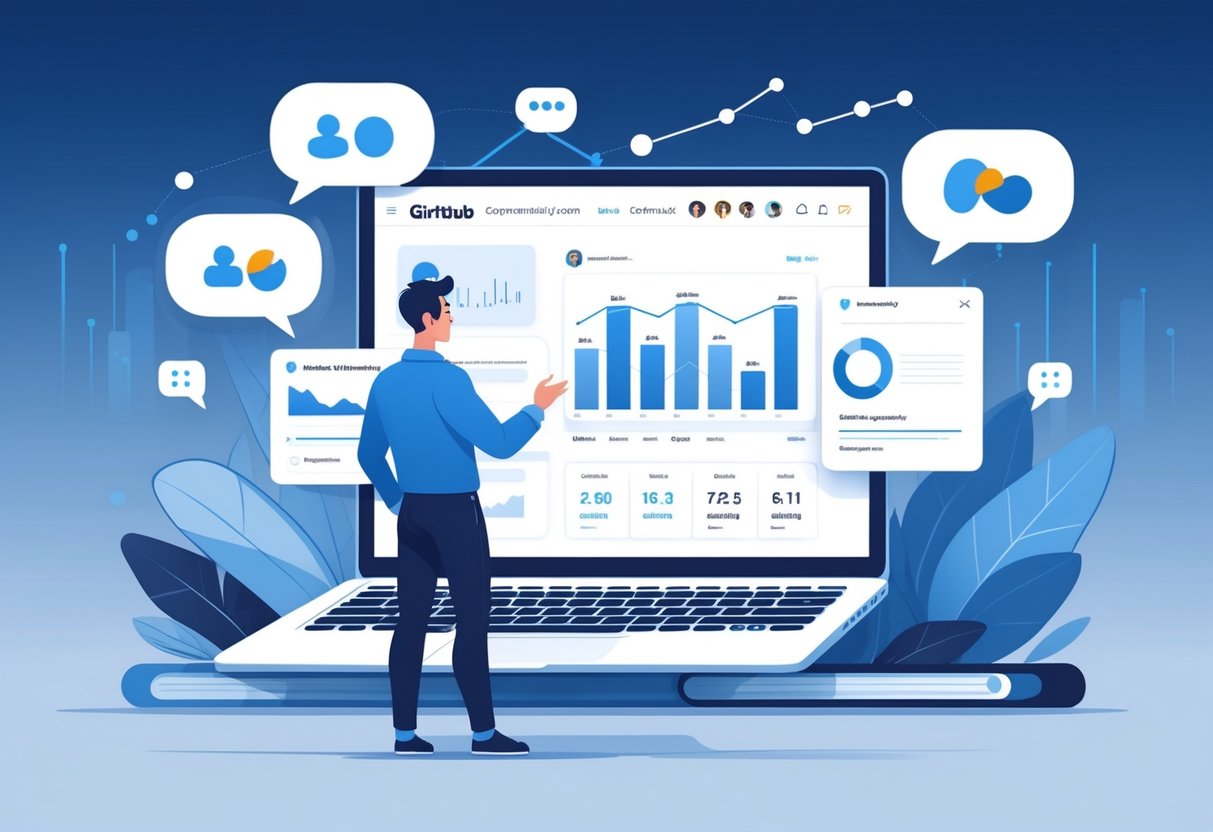
Building an active GitHub presence requires more than just uploading code repositories. Analytics professionals can significantly boost their visibility by contributing to open-source projects, engaging in meaningful discussions, and building collaborative relationships within the developer community.
Contributing to Open Source Analytics Projects
Analytics professionals should actively seek out open-source projects that align with their expertise. Popular analytics repositories include scikit-learn, pandas, Apache Spark, and R packages that need ongoing maintenance and feature development.
Contributors can start by identifying issues labeled “good first issue” or “help wanted” in analytics-focused repositories. These labels indicate tasks suitable for newcomers to the project.
Key contribution areas include:
- Bug fixes in data processing libraries
- Documentation improvements for statistical methods
- Adding new analytical features to existing tools
- Creating example notebooks and tutorials
Regular contributions demonstrate technical skills while building relationships with project maintainers. This visibility often leads to recognition within the analytics community and potential job opportunities.
Each contribution should include clear commit messages and follow the project’s coding standards. Quality contributions matter more than quantity when building a professional reputation.
Participating in Discussions and Issue Resolution
GitHub discussions and issue threads provide valuable opportunities for analytics professionals to showcase their problem-solving abilities. They should actively participate in conversations about data science methodologies, statistical approaches, and tool implementations.
Effective participation strategies:
- Answer technical questions in repository issues
- Share insights about analytical approaches
- Provide code examples and solutions
- Review pull requests from other contributors
When responding to issues, professionals should provide detailed explanations and working code samples. This demonstrates deep understanding of analytics concepts and helps other community members learn.
Regular participation in discussions builds credibility and establishes expertise in specific areas like machine learning, statistical modeling, or data visualization. Other developers begin to recognize consistent contributors as subject matter experts.
Community engagement also involves asking thoughtful questions about complex analytical problems. Well-formulated questions often generate valuable discussions that benefit the entire community.
Increasing Collaboration and Followers
Building a network of followers and collaborators requires consistent engagement and valuable contributions to the GitHub community. Analytics professionals should focus on creating meaningful connections rather than simply accumulating numbers.
Collaboration strategies include:
- Forking interesting analytics projects and adding improvements
- Inviting other developers to collaborate on personal projects
- Participating in hackathons and coding challenges
- Mentoring newcomers to analytics programming
Following other analytics professionals and starring their quality repositories helps build reciprocal relationships. Many developers follow back users who engage meaningfully with their work.
Creating educational content like tutorial repositories or analytical case studies attracts followers interested in learning. These resources demonstrate expertise while providing value to the community.
Cross-platform promotion helps expand reach beyond GitHub. Sharing GitHub projects on LinkedIn, Twitter, or data science forums can attract new followers and collaborators to their repositories.
Frequently Asked Questions
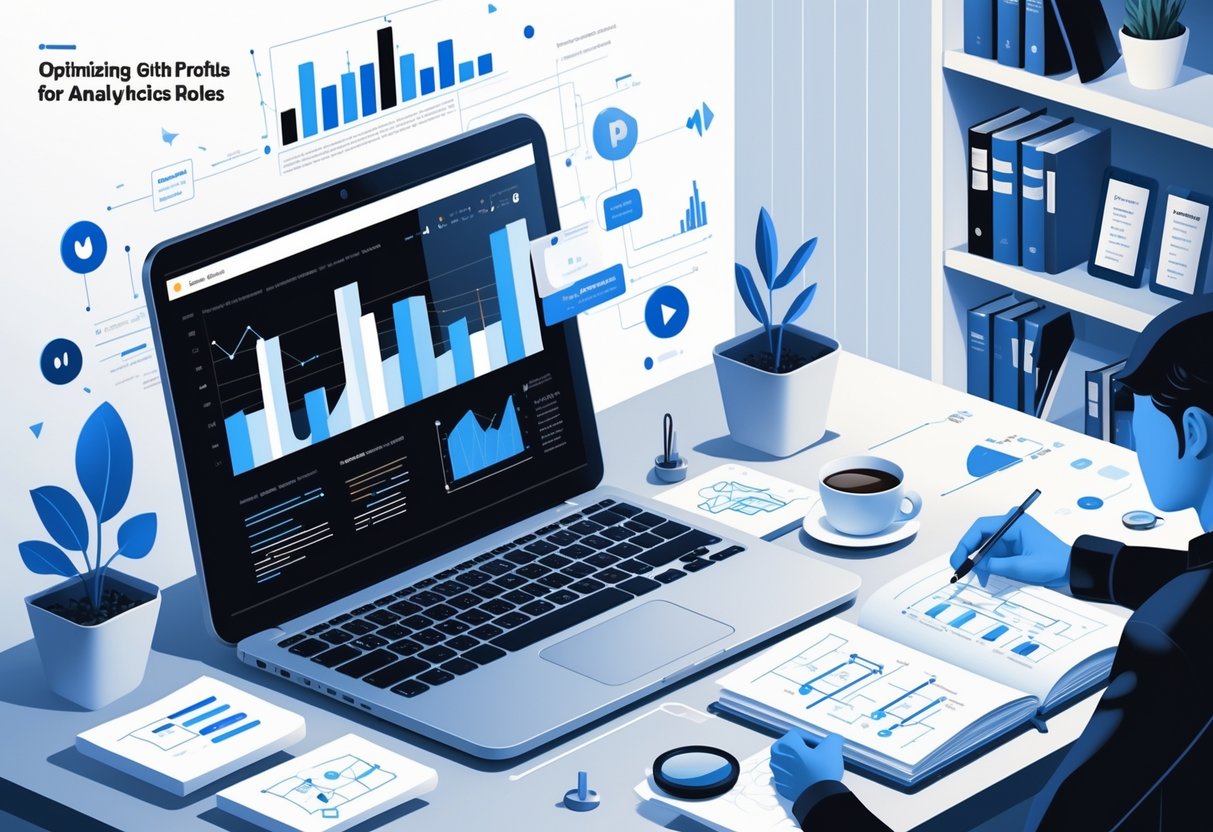
Analytics professionals face unique challenges when optimizing their GitHub profiles to showcase technical skills and data-driven projects. These common questions address specific strategies for presenting statistical analysis, data visualization capabilities, and domain expertise effectively.
What elements should be included in a ReadMe to showcase analytics projects effectively?
A strong analytics project README should start with a clear problem statement and business context. This immediately shows the real-world application of the work.
The methodology section needs to explain the analytical approach used. Include details about data sources, statistical methods, and analytical frameworks applied.
Data visualization sections should feature charts, graphs, and interactive plots. These visual elements demonstrate the ability to communicate insights effectively to stakeholders.
Technical implementation details matter for analytics roles. List specific libraries like pandas, scikit-learn, R, or Tableau used in the analysis.
Results and conclusions should highlight key findings and business impact. Quantify outcomes whenever possible with specific metrics or improvements achieved.
How can I highlight my data analysis skills on my GitHub profile?
Pin repositories that demonstrate different analytical techniques. Choose projects that show proficiency in statistical analysis, machine learning, and data visualization.
The profile README acts as a personal billboard for showcasing technical skills. Include badges for programming languages like Python, R, SQL, and analytical tools.
Create a skills matrix that categorizes capabilities by domain. Separate sections for statistical analysis, machine learning, data visualization, and business intelligence tools work well.
Showcase projects across different industries or use cases. This demonstrates versatility in applying analytical skills to various business problems.
Include links to live dashboards or interactive visualizations when possible. These provide immediate proof of technical capabilities and design skills.
What are the best practices for structuring a GitHub bio for an aspiring analytics professional?
The bio should immediately identify the person as a data professional. Start with a clear title like “Data Analyst” or “Business Intelligence Developer.”
Mention specific analytical domains of interest or expertise. Examples include financial analytics, marketing analytics, or healthcare data analysis.
Include key technical skills in the bio section. Focus on the most relevant tools and programming languages for the target role.
Add location information if open to relocation or remote work. Many analytics positions have specific geographic requirements or preferences.
Link to external profiles like LinkedIn or personal portfolios. This creates a comprehensive professional presence across platforms.
Can you suggest any GitHub profile templates that are particularly suited for showcasing analytics work?
Data science profile templates typically include sections for statistical analysis projects and machine learning models. These templates emphasize technical depth and quantitative results.
Business intelligence templates focus on dashboard creation and reporting capabilities. They highlight tools like Tableau, Power BI, and SQL database management.
Academic research templates work well for those with statistical analysis backgrounds. These emphasize peer-reviewed work and research methodologies.
Portfolio-style templates allow for visual project showcases. They work particularly well for data visualization specialists and UX-focused analysts.
Industry-specific templates can highlight domain expertise. Healthcare analytics, financial modeling, or marketing analytics templates show specialized knowledge.
How can a student with an interest in analytics best present their projects on GitHub?
Course projects should be elevated beyond basic assignments. Add additional analysis, improved visualizations, or extended research questions to demonstrate initiative.
Personal projects using publicly available datasets show genuine interest in analytics. Choose datasets from platforms like Kaggle or government open data portals.
Internship or co-op work can be included with proper permissions. Focus on the analytical methods and tools learned rather than proprietary business information.
Collaborative projects demonstrate teamwork abilities valued in analytics roles. Group projects from courses or hackathons show collaboration skills.
Consistent commit activity shows ongoing engagement with analytical work. Regular updates to projects indicate continuous learning and improvement.
What are the characteristics of a GitHub profile that stands out to employers looking for analytics roles?
Clean, well-documented code demonstrates professional standards expected in business environments. Employers value readable code that follows industry best practices.
Real business problems solved through analytics show practical application skills. Projects that address actual business challenges resonate more than theoretical exercises.
Diverse analytical techniques displayed across projects indicate versatility. Employers seek candidates comfortable with various statistical methods and tools.
Clear communication of complex findings appeals to hiring managers. The ability to explain technical concepts in accessible language is crucial for analytics roles.
GitHub provides tips for optimizing your profile to attract potential employers, making a standout profile essential for discovery. Professional presentation and comprehensive project documentation increase visibility to potential employers.

